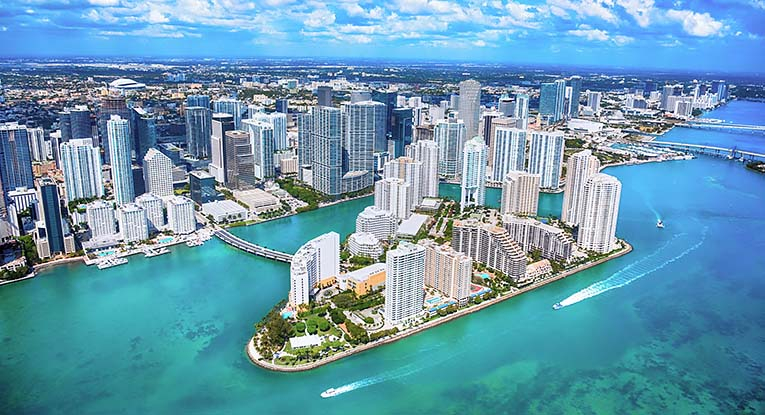SBRA Provisions Make Chapter 11 More Accessible to Small Businesses, Sole Proprietors
While the headlines are replete with the news of large, well-known corporations filing for protection under Chapter 11 of the Bankruptcy Code, little attention is being focused on the financial distress of smaller “mom and pop” companies and sole proprietorships. However, many businesses that required bankruptcy protection and should have been candidates to reorganize under Chapter 11 found the cost and process to be prohibitive. Many of those debtors faced an insurmountable hurdle – the Bankruptcy Code required those small businesses and sole proprietorships to utilize the same daunting and expensive processes and rules that apply to large publicly traded companies. The Small Business Reorganization Act of 2019 (SBRA), which took effect on Feb. 19, 2020, is a congressional attempt to remove many of the legal and economic barriers that have prevented small businesses and sole proprietorships from seeking relief and successfully reorganizing under Chapter 11. While the SBRA afforded this low cost relief to companies with debts (secured and unsecured) of less than $2,725,625, even that amount excluded an extraordinary number of companies seeking affordable bankruptcy relief. The pandemic provided a silver lining for those companies and those companies that fell victim to COVID-19. A significant piece of the CARES Act modified the newly effective SBRA by raising the maximum amount of debt threshold to $7.5 million. The catch is that this increased cap is temporary – it lasts for only one year. This summary provides an overview of the specifics of the SBRA and highlights some of the provisions which make Chapter 11 reorganization more accessible to smaller (and not so small) businesses and sole proprietorships.
What is a Small Business Debtor?
To be classified as a Small Business Debtor (SBD) under SBRA, potential debtors must be:
- a person or entity engaged in commercial or business activity with aggregate, noncontingent, liquidated, secured and unsecured debts of $7.5 million, excluding amounts owed to insiders and affiliates (in the absence of future congressional action, this debt limit will reduce to $2,725,625 after March 27, 2021); and
- at least 50% of the SBD’s debts must have arisen from such commercial or business activities.
In addition, they cannot be:
- a debtor owning “single asset real estate” that derives substantially all of its gross income from that property; or
- a member of a group of affiliated debtors that has aggregate, noncontingent, liquidated, secured and unsecured debts in an amount greater than the threshold.
Management of the SBD as a Debtor-in-Possession
The SBD, with its existing management and directors, continues its normal business operations in Chapter 11 as a “debtor-in-possession.” In performing debtor-in-possession functions, the SBD must comply with the reporting requirements and fulfill the duties of trustee or debtor-in-possession in small business cases, including the filing of the business’s most recent balance sheet, statement of operations, cash-flow statement, and federal income tax return or a sworn statement that such documents do not exist.
Although existing management remains in control and operates the SBD, the United States Trustee will appoint a “Small Business Trustee” (SBT) in every case under the SBRA. The SBT’s role is limited to:
- examining claims and filing objections;
- opposing discharge and furnishing information to parties in interest;
- filing a final report; investigating--on request of a party in interest and for cause – acts, conduct and financial affairs of the debtor, and fraud, dishonesty, misconduct and mismanagement;
- appearing and being heard on issues of value of property subject to lien, plan confirmation, sale of property and modification of plan;
- ensuring that the debtor commences timely payments under the confirmed plan;
- supervising the SBD’s future earnings and income;
- making distributions under the plan;
- operating the debtor’s business if the debtor is removed as debtor-in-possession; and
- facilitating the development of a consensual plan.
Importantly for an SDB, a committee to represent creditors will not be constituted in small business cases “unless the court orders otherwise.” The absence of a committee should result in reduced cost of bankruptcy proceeding and greater control by existing management.
As in a traditional Chapter 11 case, the debtor can employ professionals. Under the SBRA, the rules for engagement are relaxed as professionals are not disqualified from being employed by the estate if they hold a prepetition claim against the debtor of less than $10,000.
The Expedited Process
An objective of the SBRA is to streamline the reorganization process, thereby reducing cost and making it a more viable option. As such, the SBRA sets forth a compressed timeline for performance. Within 60 days of filing the case, the bankruptcy court is to hold a status conference “to further the expeditious and economical resolution” of the case. At least 14 days prior to that conference, the debtor is required to file a report detailing its efforts to achieve a consensual plan of reorganization.
The debtor must file a plan within 90 days after the order for relief. However, the court can extend this deadline under “circumstances for which the debtor should not justly be held accountable.”
Once In, How to Get Out: The Plan
In any Chapter 11 case, the objective is to emerge from bankruptcy under the terms of a confirmed plan of reorganization. Under the SBRA, Congress provides the SBD with specific advantages that are not otherwise available in Chapter 11. Under the SBRA, an SBD is not distracted by the possibility that a creditor may propose a competing plan. Only the debtor is allowed to propose a plan. This perpetual plan exclusivity is similar to that afforded to family farmers and fishermen under Chapter 12 and consumer debtors under Chapter 13.
To further expedite the confirmation timeline and to reduce costs, the SBD is not required to prepare, file and obtain approval of a Disclosure Statement before soliciting votes on its plan. The plan must include a brief history of the business operations of the debtor, a liquidation analysis, projections with respect to the debtor’s ability to make payments under the proposed plan, and provide for the submission of all or such portion of future earnings or income to the supervision and control of the SBT as is necessary for the execution of the plan.
Congress has also provided the SBD with important tools that are critical to an effective reorganization of a small business, but are not otherwise available under Chapter 11. Under the SBRA, the SBD may:
- modify a mortgage on the SBD’s principal residence if that mortgage loan was not used to acquire the real property, but rather was used primarily in connection with the debtor’s business; and
- pay Section 503(b) administrative expense claims over the life of the plan rather than as a condition to confirmation.
The Requirements to Confirm a Plan Are Relaxed
The requirements to achieve confirmation of a plan are found in Section 1129(a) of the Bankruptcy Code. However, unlike a traditional Chapter 11 reorganization, an SBD’s plan may be confirmed even if no impaired class of creditors accepts the plan. As to nonaccepting impaired secured claims, cramdown is identical to an ordinary Chapter 11 case. As to nonaccepting impaired unsecured claims, the plan must not discriminate unfairly and must be fair and equitable with respect to the impaired nonaccepting class:
- “Fair and equitable” requires the debtor to commit all of its “projected disposable income” or property of equivalent value to make payments for a minimum of three and a maximum of five years.
- “Disposable income” means income received by the debtor that is not reasonably necessary to (1) maintain and support the debtor or a dependent, (2) satisfy domestic support obligations that become first payable post-petition, or (3) ensure the continuation, preservation or operation of the business.
The debtor must demonstrate a “reasonable likelihood” that it will be able to make all payments under the plan, and the plan must provide “appropriate remedies, which may include the liquidation of nonexempt assets” to protect creditors if the debtor fails to make plan payments (Section 1191(c)(3)(B)).
To further aid the SBD in its efforts to reorganize, the “absolute priority rule” under Section 1129(b) of the Bankruptcy Code, which precludes the SBD’s existing equity holders from retaining their ownership interests in the reorganized entity unless all creditors are paid in full, does not apply under the SBRA.
If the plan is confirmed consensually under Section 1191(a), the discharge provisions of Section 1141(d) apply to discharge debts at confirmation. If the plan is confirmed by cramdown under Section 1191(b), a discharge is entered “as soon as practicable” after the debtor completes all payments (within the three- to five-year period). Discharge does not extend to debts on which the last payment is due after the three- to five-year period.
Key Takeaways
The SBRA’s subchapter of the Bankruptcy Code provides a number of key benefits for small businesses and sole proprietorships. It is recommended that you consult with legal counsel to determine whether your business is eligible under these relief provisions.
- Available to individual, sole proprietorships or companies engaged in commercial or business activity with aggregate, noncontingent, liquidated, secured and unsecured debts of $7.5 million.
- Management retains control.
- A faster and less costly process to reorganization – plan filed in 90 days.
- Creditors don’t need to accept plan.
- Can modify a mortgage on the SBD’s principal residence if that mortgage loan was used primarily in connection with the debtor’s business.
- Post-filing expenses can be deferred and paid under the term of the plan.
- Must commit all of its “projected disposable income” or property of equivalent value to make payments to creditors for a minimum of three and a maximum of five years.
- “Disposable income” means income received by the debtor that is not reasonably necessary to (1) maintain and support the debtor or a dependent, (2) satisfy domestic support obligations that become first payable post-petition, or (3) ensure the continuation, preservation or operation of the business.
- Existing equity can retain ownership even if creditors are not paid in full.

































